THE MIDLAND RAILWAY STUDY CENTRE
These notes were originally written in March 2021 as an ongoing series of updates on progress to get the new Museum of Making (and the Midland Railway Study Centre within) ready for the reopening in May that year. They remain, however, a useful insight to how the Study Centre looks now...
The clocks are about to spring forward, March is almost ready to make way for April, Easter is around the corner and several weeks have passed since my last update about the Study Centre. Sadly, since my last notes we have also lost the man we have to thank for all this; Roy Burrows passed away on 9th March. It is a matter of great sadness to many of us that Roy never got to see the new Study Centre other than through updates like these. I do know, however, that he took great comfort from the way things have been developing here at the Silk Mill, knowing his collection will serve as a long lasting memorial to his life and work.
On the face of it, not much has changed since the February update. I have been saying for what seems like an awful long time now that the Study Centre is “just about finished” and yet have continued to find plenty to do on my regular visits in in the interim. The Government's “road map out of lockdown” allows more movement for people in the coming weeks and as such, many more of our members and volunteers will be able to venture out and see the place, even as the Museum of Making continues its own preparations to let the public into the Silk Mill once more. If all things continue as currently scheduled, I hope to be able to make an announcement in respect of booking appointments and putting the Midland Railway Study Centre back to its intended purpose in the near future.
Let's have a look around and see what the place looks like as March draws to a close...
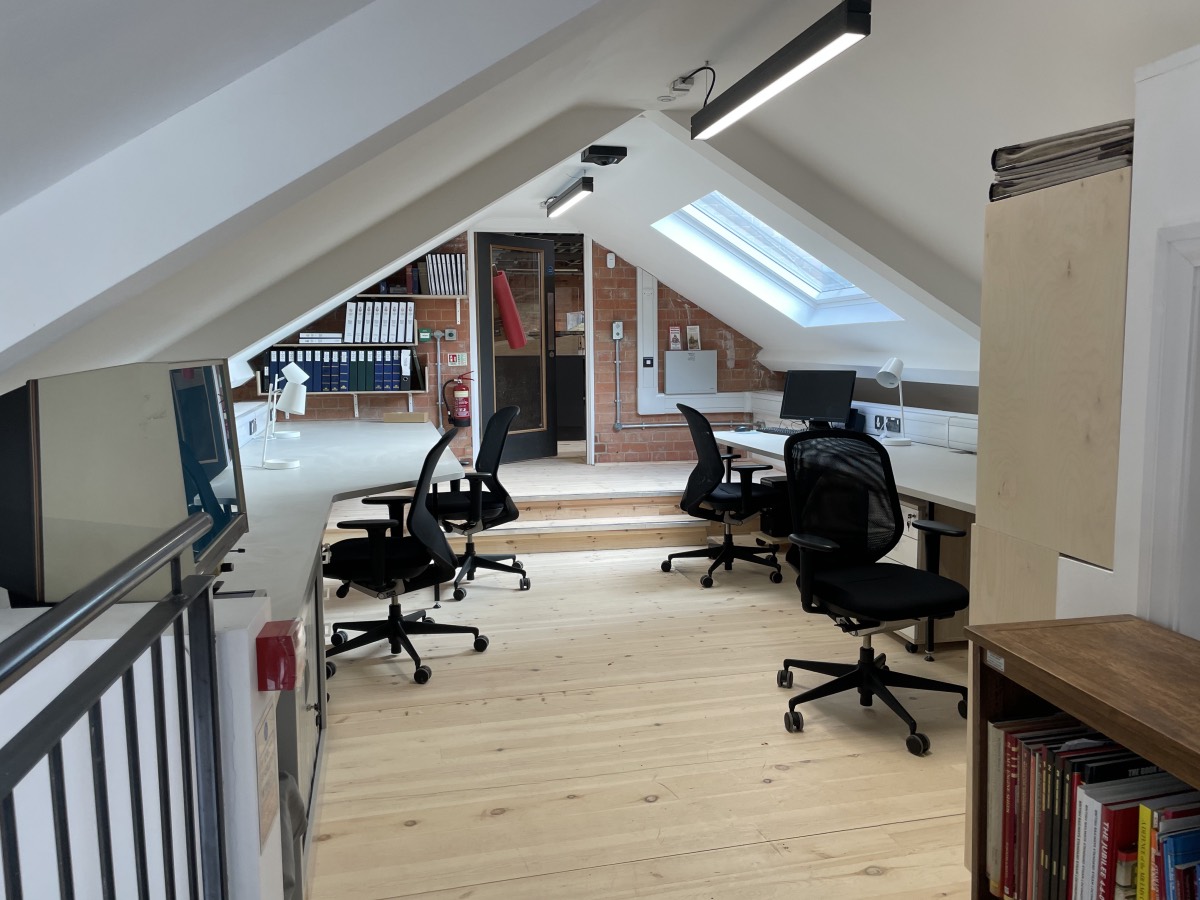
Recent developments in the Reading Room include the delivery of chairs, installation of desk lamps, provision of bookshelves by the Museum's Workshop for the Midland Railway Society Library and other finishing touches. The initial idea of the architects to construct a mezzanine floor in the eaves of the former store room was, it has to be said, inspired. I confess to having my doubts at first; being quite tall myself I feared I would be constantly stooping while moving about. However, what has been delivered is a perfectly practical reading room, using the eaves for the work surfaces — which are deliberately long so as to provide room for the biggest rolled plans to be opened out and consulted. Three researchers and a MRS volunteer can be accommodated very comfortably.
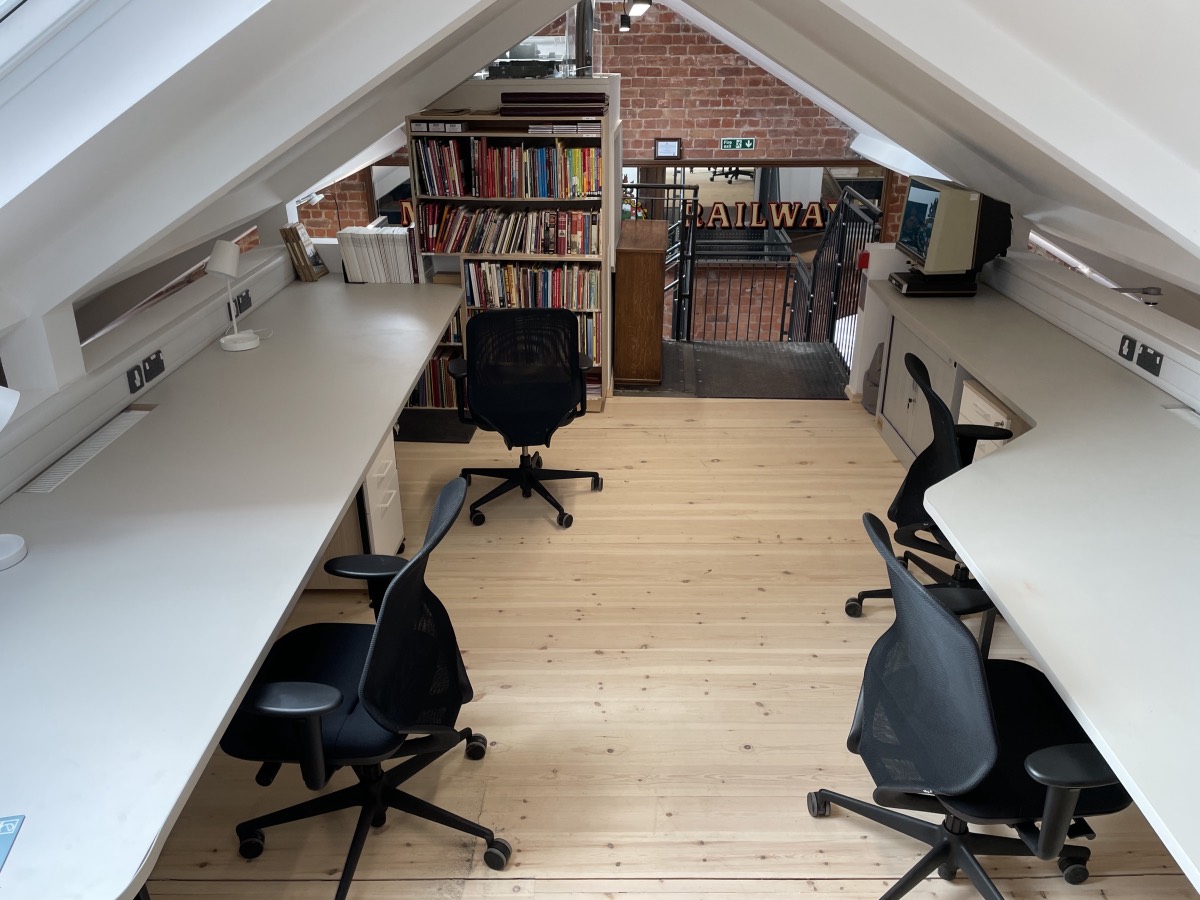
A combination of natural light from the south-facing (and strongly UV filtered!) skylight with the plentiful provision of overhead and desk lamps, make the Reading Room an excellent environment for study. The Society's library, as well as a range of reference material and finding aids are available to assist researchers get the best out of our collections. There is also a PC on which the Study Centre Catalogue can be consulted. All this, combined with the advice and guidance of the Midland Railway Society volunteers who will be on hand when visitors are present will ensure a day spent researching Midland Railway related subjects here should be very productive.
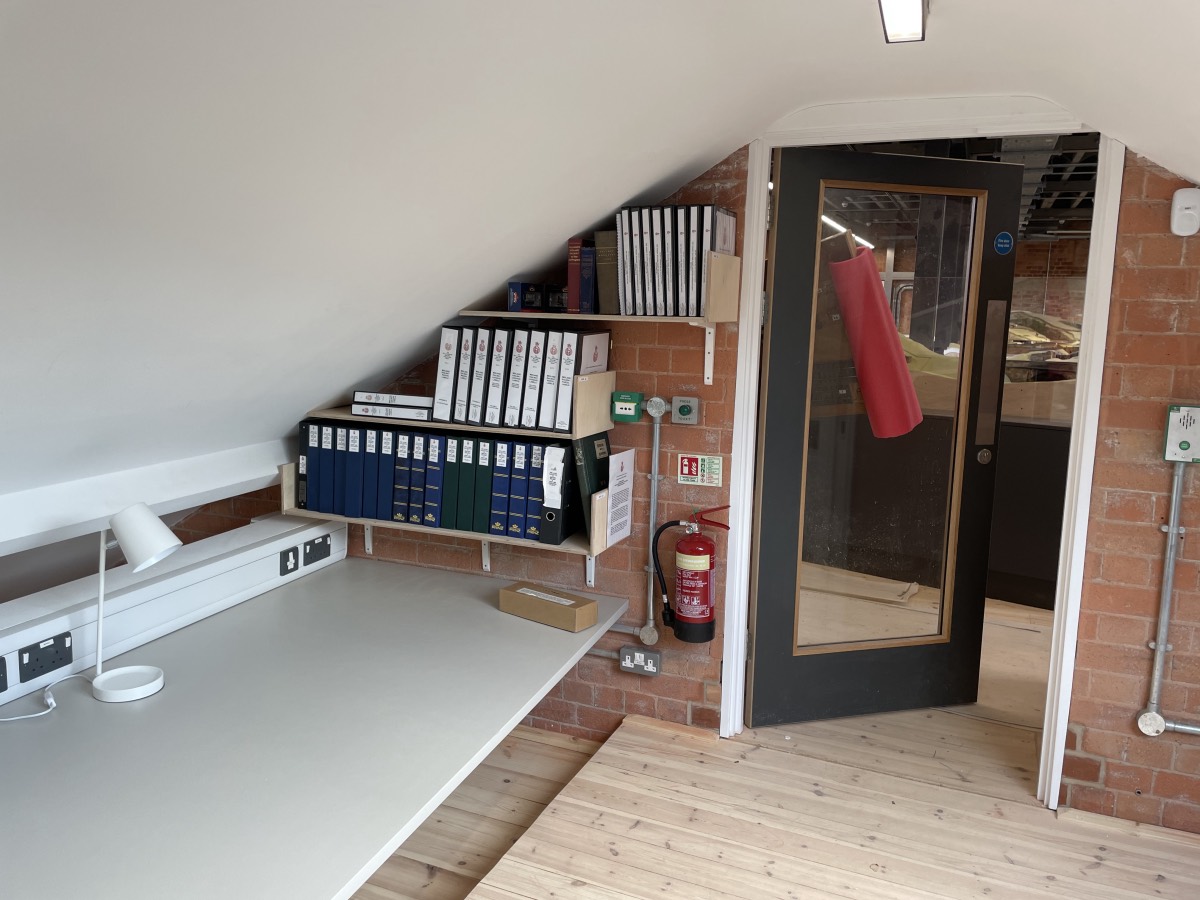
It is inescapable that in the absence of the elasticated walls we asked the architects for, space is limited and that every part of the building has to be put to full use. That is well illustrated in this view with the bookshelves utilising all the wall space left over after the essential gubbins have been installed. Being a mezzanine in the eaves of the roof means there is very little vertical wall space in this part of the building of course.
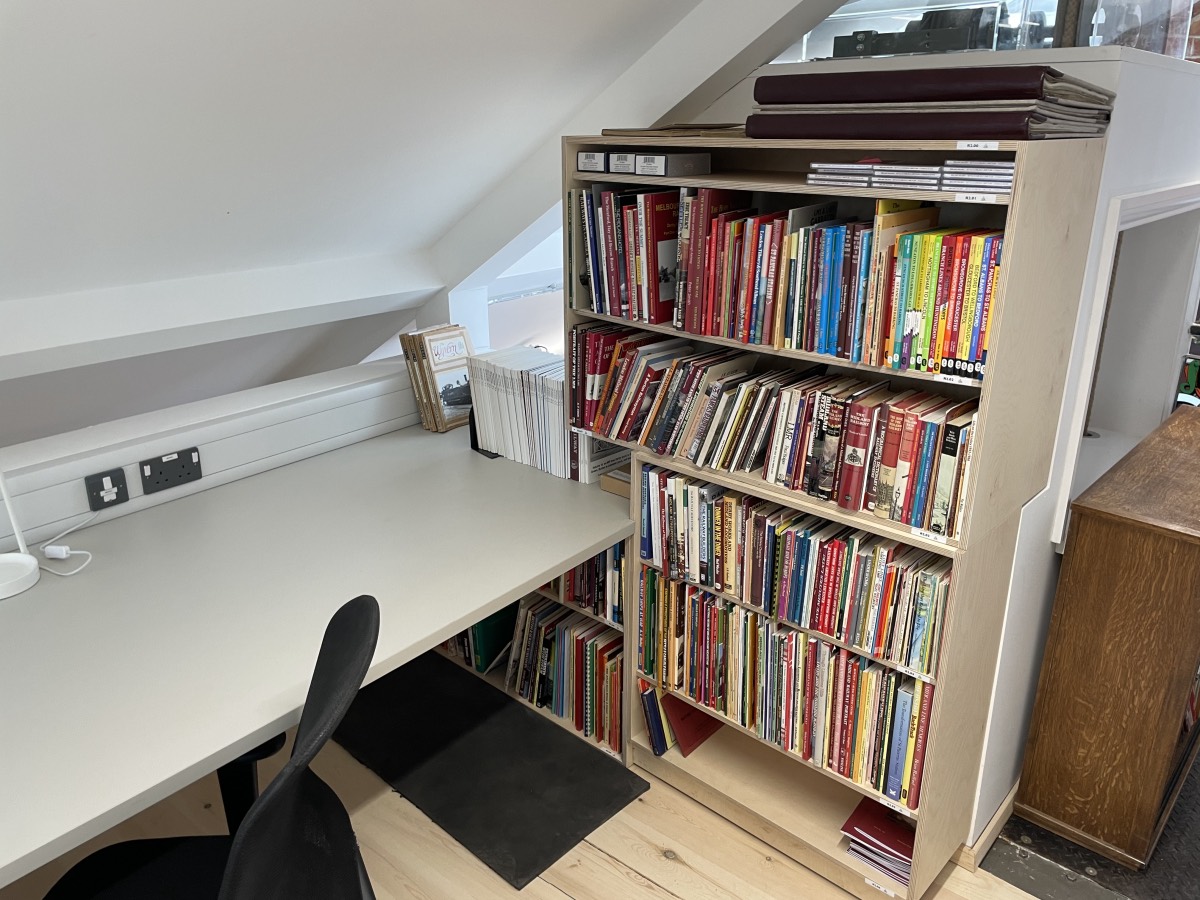
As may perhaps be imagined, some of the ledgers and boxes of items in our collection are quite heavy. Being stored below the Reading Room, the provision of a dumbwaiter avoids the need for our volunteers to carry heavy items up and down the staircase. It also provides extra wall space to squeeze another set of bookshelves in. Granted, getting at those located under the work surface requires a small amount of contortionist skill but is a small compromise in the context of what has been provided for us overall.
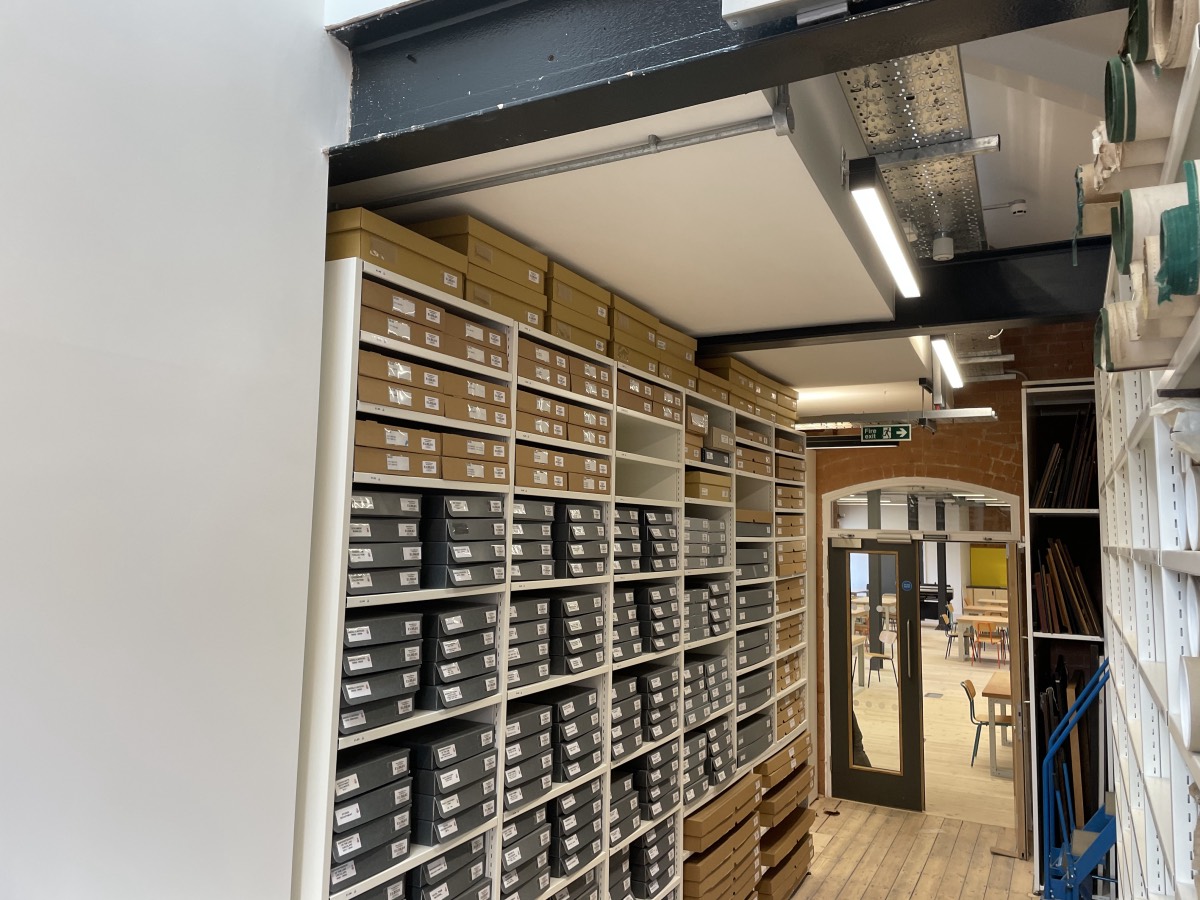
Not too much has changed in this view since previous updates. The fixture on the right will soon be filled with rolled plans from the Carriage & Wagon and Estate Agent collections. Early on in the planning stage, a compromise had to be reached in respect of floor space in this store. Consequently, only about 10% of each of those collections can be accommodated here at any one time. Our intention is that we will continue the programme of digitising these collections and, ultimately, only those plans which can't be scanned for whatever reason will be held here. The remainder will be held in “deep store” elsewhere, with digital copies utilised on a day-to-day basis. Also in this view, the Museum's “Learning Space” can be seen. For several months this has served us well as our staging area while our collections have been systematically installed back in the Study Centre. The Museum are pleased to have this area back now and are starting to prepare it for its intended use of accommodating visiting school parties.
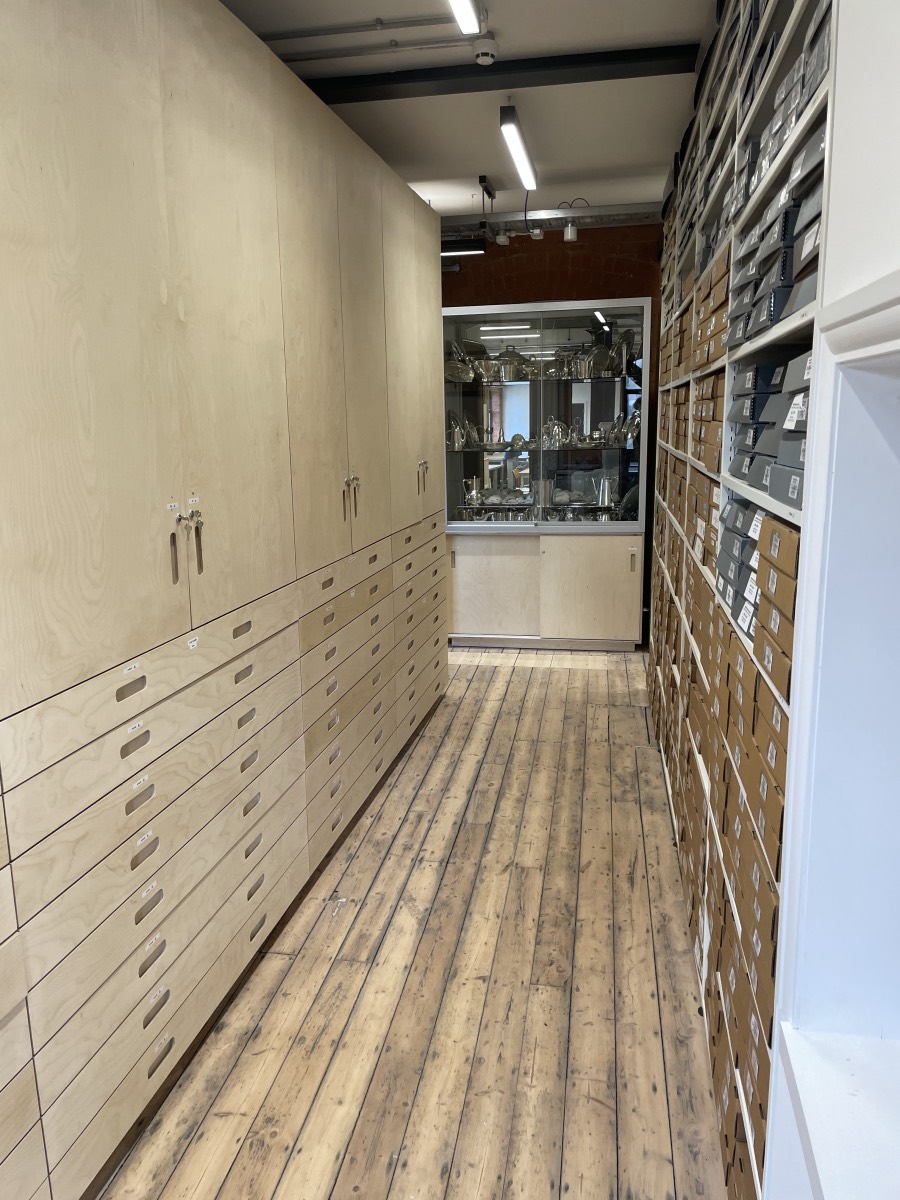
The fixture on the left, designed by Baumon Lyons to our specification, and expertly constructed by the skilled Derby Museum workshop, is now largely filled with our documents and ledgers. Whilst most of the three dimensional objects in our collections will be located within “The Assemblage” (see below), many of the items originating from the Midland Railway's hotels, restaurant cars and steamships are retained within the Study Centre itself. The fixture at the end is located within an archway which opens out into the Learning Space and thereby lends itself to housing a display cabinet for these items.
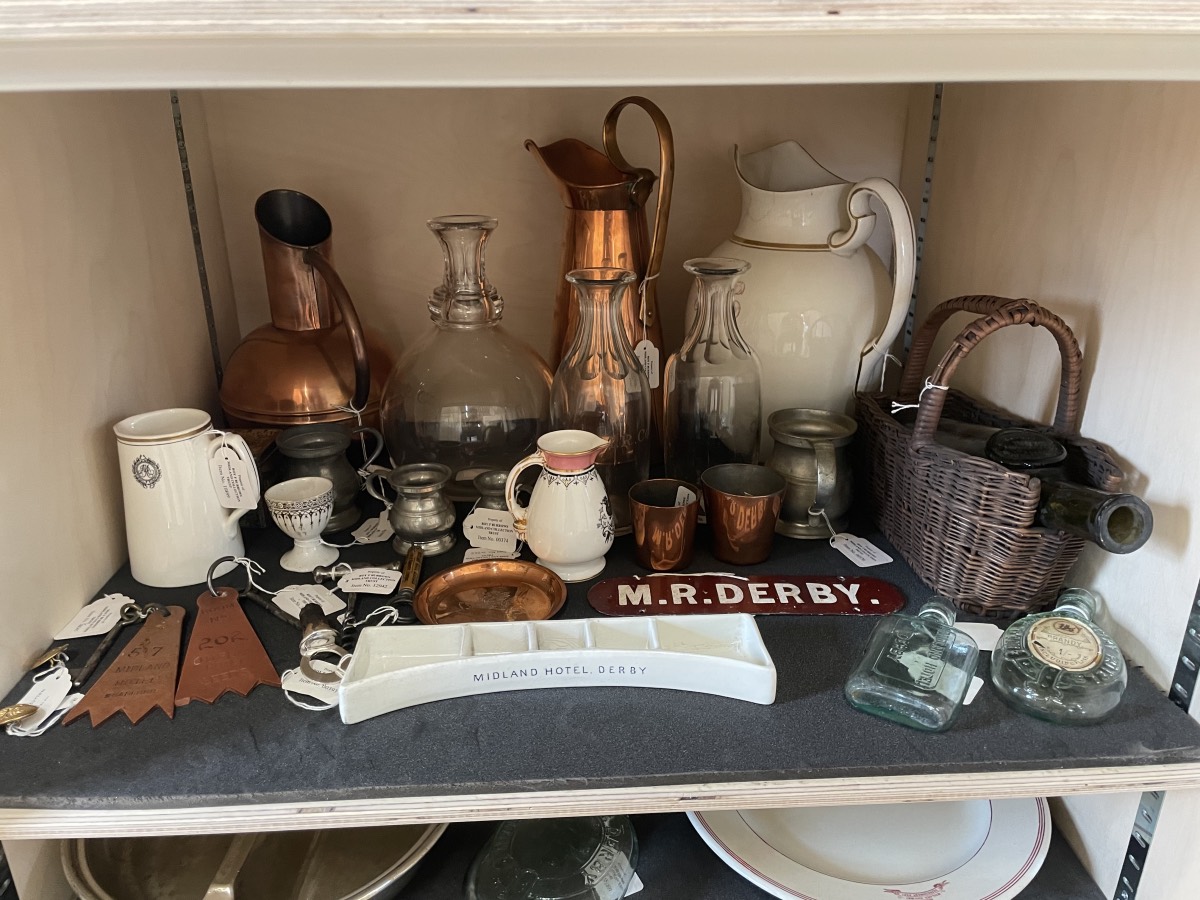
For quite some time now we have been planning to have an 'outstation' display of items located within the Midland Hotel at Derby. For various reasons this has yet to come to fruition and probably now won't happen. However, as the items selected for the display have all been specially “quarantined” from the rest of the collection, they happily make for quite an attractive sight just sitting there on the shelf!
Leaving the Midland Railway Study Centre for now, let's look round the rest of the Museum of Making and see what there is of interest relating to the Midland Railway...
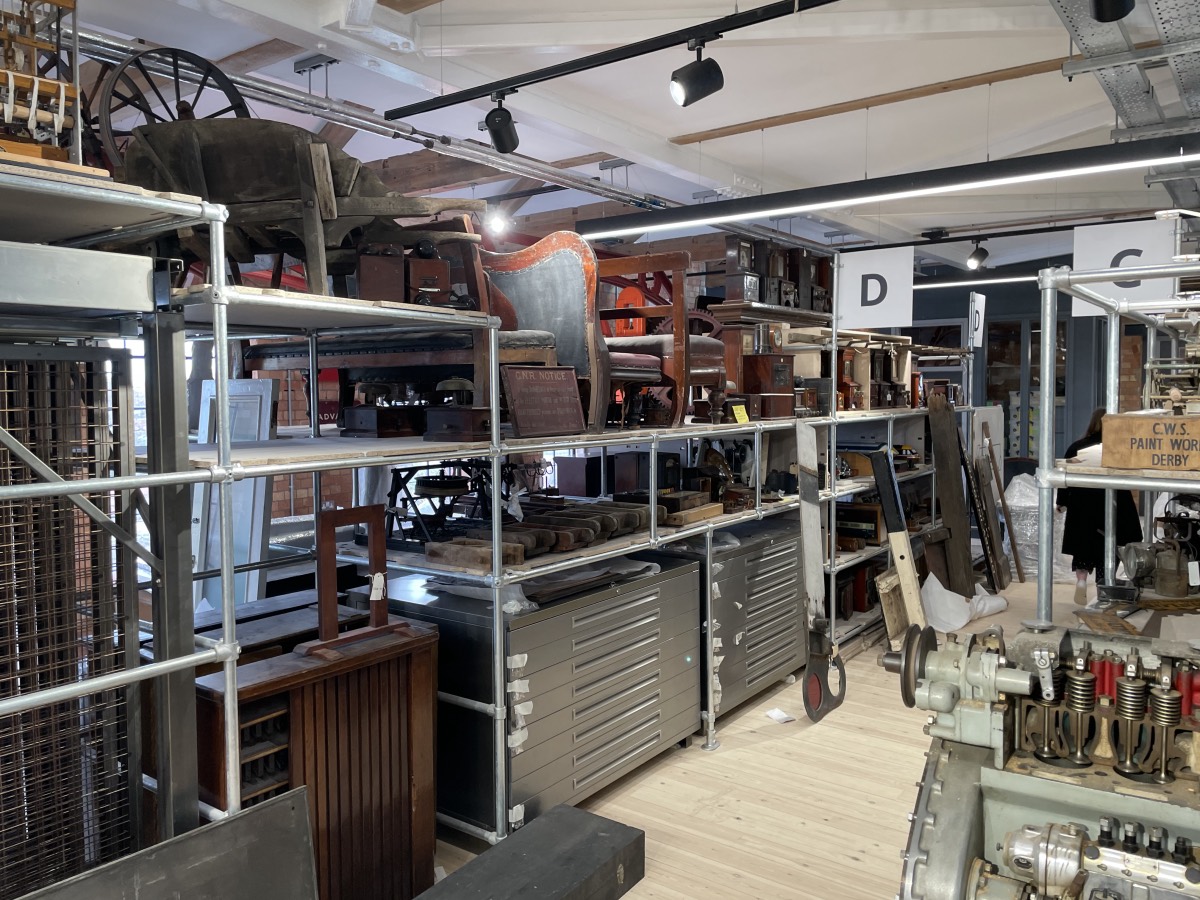
As has been mentioned in several previous updates, one of the Museum of Making's most important features will be that the entirety of the collections held in the building will be accessible to visitors rather than locked away in a dusty store room like most museums. As well as utilising walls all around the Silk Mill, as we will see below, the primary space for this accessible storage is called The Assemblage. Objects in this area will be grouped by material and here we see the area where wood is the dominant material stored. Look closely and you will see a plethora of Midland Railway items here, both from the Museum's own collection and the Roy F Burrows Collection.
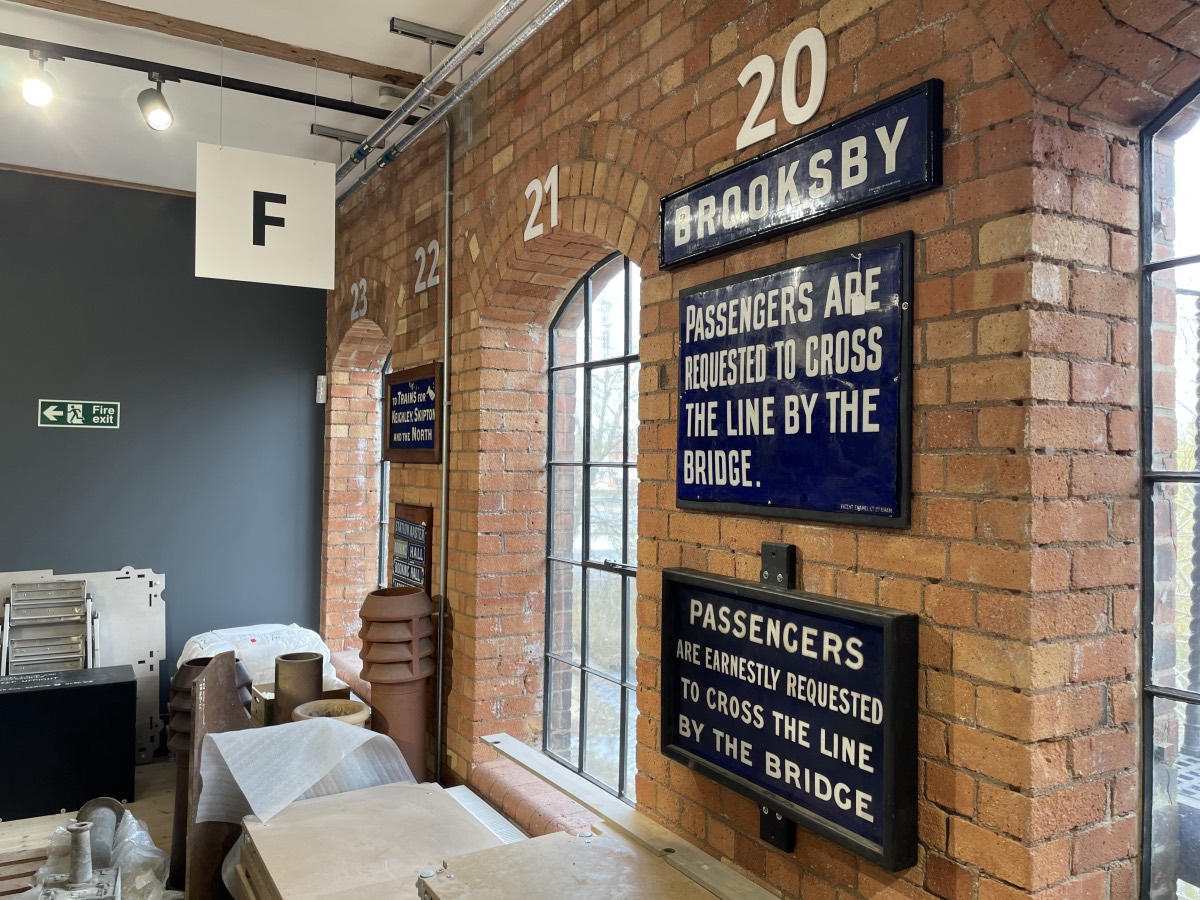
The Midland Railway made extensive use of enamel signs but in the early years the chemical process was such that — just like Henry Ford's Model 'T' — your choice of colour was limited to just one!
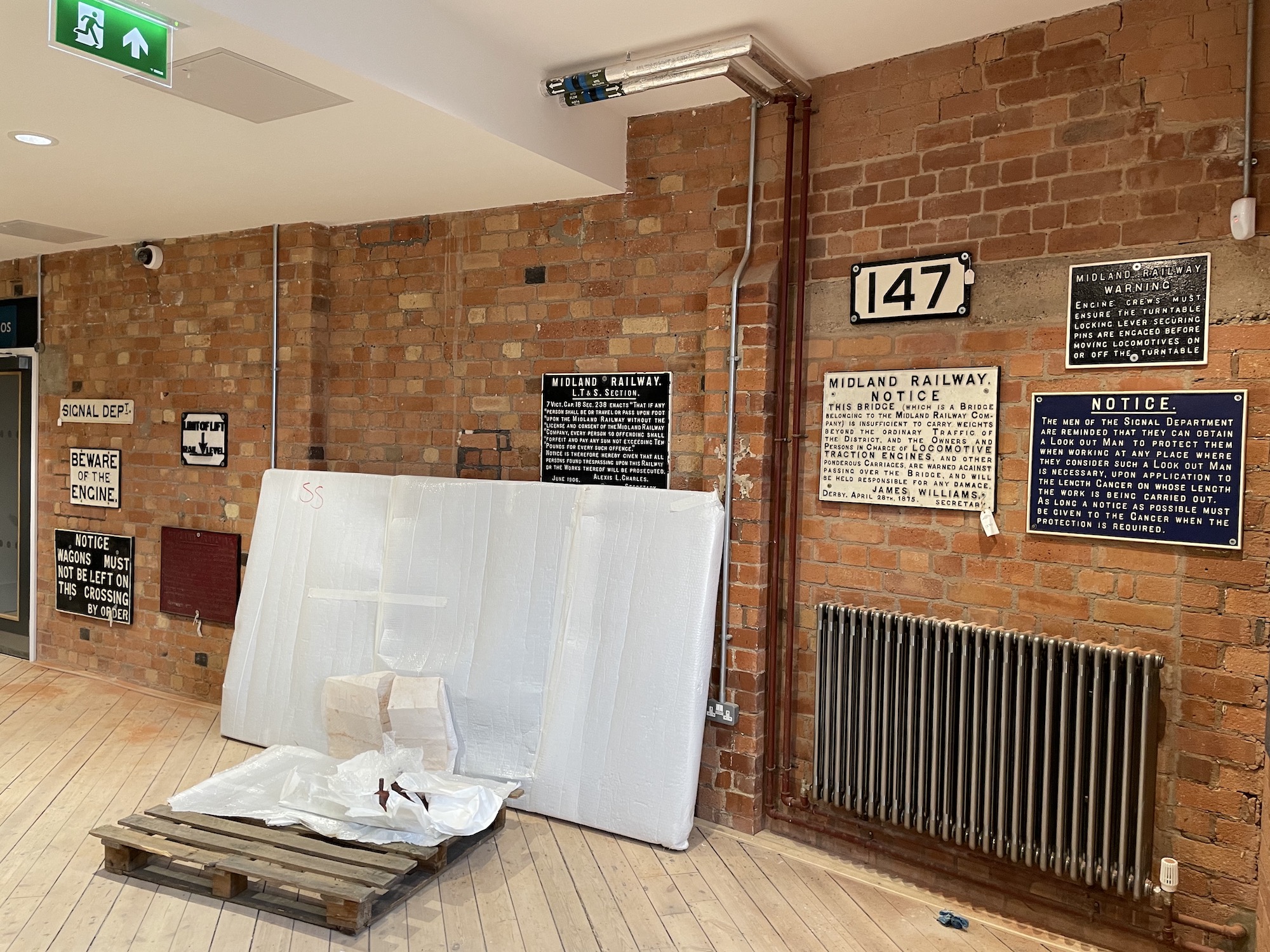
As mentioned above, walls make exceptionally good places to “store” heavy cast iron signs. The team from Core Design have been hard at work mounting all these, but they have a LOT more to go at!
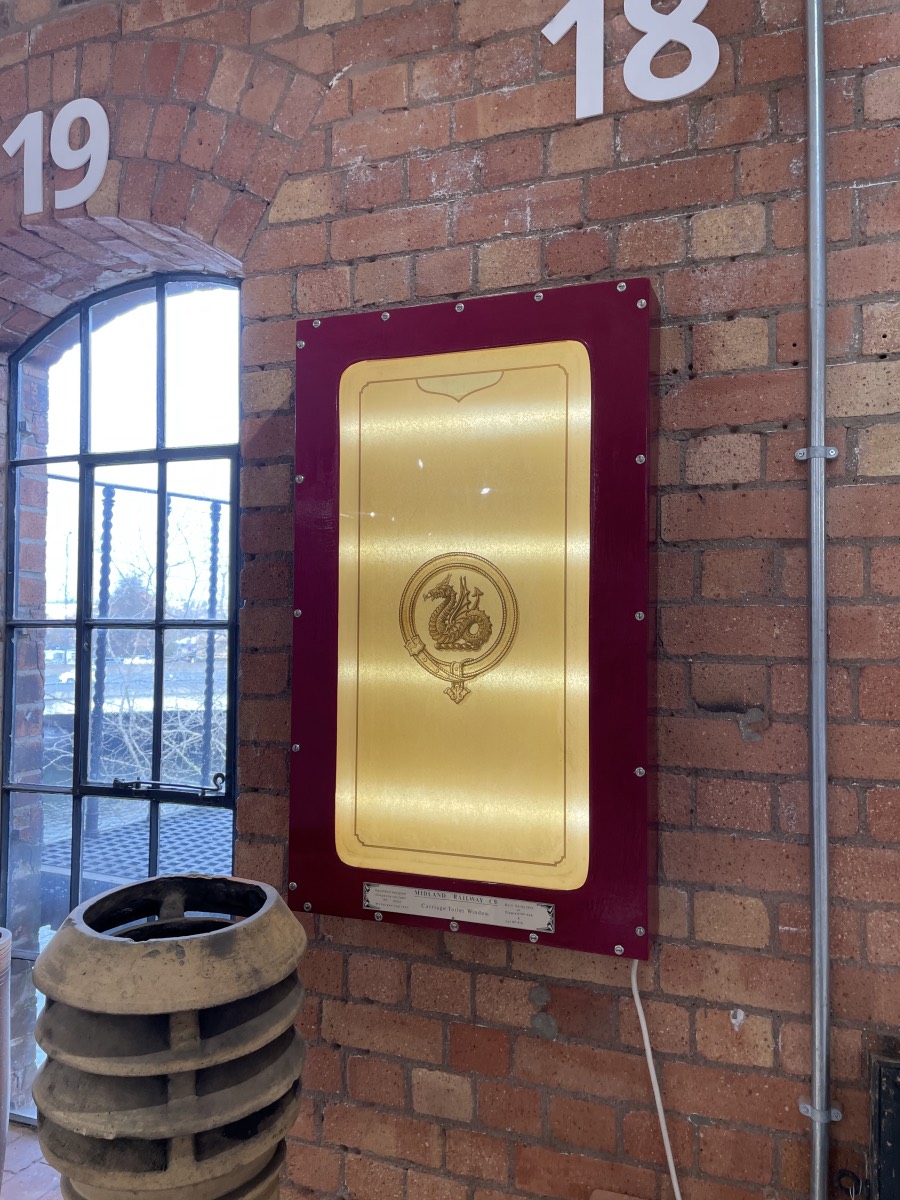
If you were to have asked him what his favourite objects with the collection were, Roy Burrows would have had a difficult decision to make. Anything relating to Swadlincote was always high up on such a list as that is where his father had worked on the Midland Railway and his life's passion was born. Beyond that, I think this wonderfully mounted carriage toilet window would also have been a strong contender for Roy's affection. It certainly used to draw comment when we did tours of the old Study Centre and I strongly suspect it will continue to do so in the Museum of Making!

The Assemblage, by its very nature, is entirely unlike a conventional museum gallery. Labelling and interpretation is completely impossible with so many items located in a relatively confined space. That means that something to enable visitors to find things for themselves is needed, and this is part of the answer... Trailmaker. There are several of these terminals scattered around The Assemblage and as their name suggests, the idea is that visitors can create themed trails around the room... all conveniently printed out on a sort of 'till roll'. Other ways of accessing the collection electronically via the ubiquitous smartphone and WiFi will be available too. We will be making sure that there will be several 'Midland Railway trails' to follow.
A look outside to finish off...

Perhaps the most significant development since the last update is that the Silk Mill is no longer a building site. The contractors Speller Metcalfe have managed the site during the construction phase, but as all the trades slowly but surely completed their tasks and the inevitable “snagging” was completed, the site was handed back to Derby Museums in late February. A few jobs remain, especially outside (such as finishing off the Bakewell Gates), but the Silk Mill is definitely a museum once again and no longer a building site.
That has brought you up to date for now. I fear I am unable to give you a firm date for opening as yet, though I can assure you it is not far away. Once we are able to get our volunteers in and familiarised with where everything is in the new Study Centre, and the Museum itself is able to accommodate the public, we will be making appointments to use the Study Centre available. Please keep an eye on this site as everything will be announced on the front page.
You can read the previous updates as well if you are interested:-